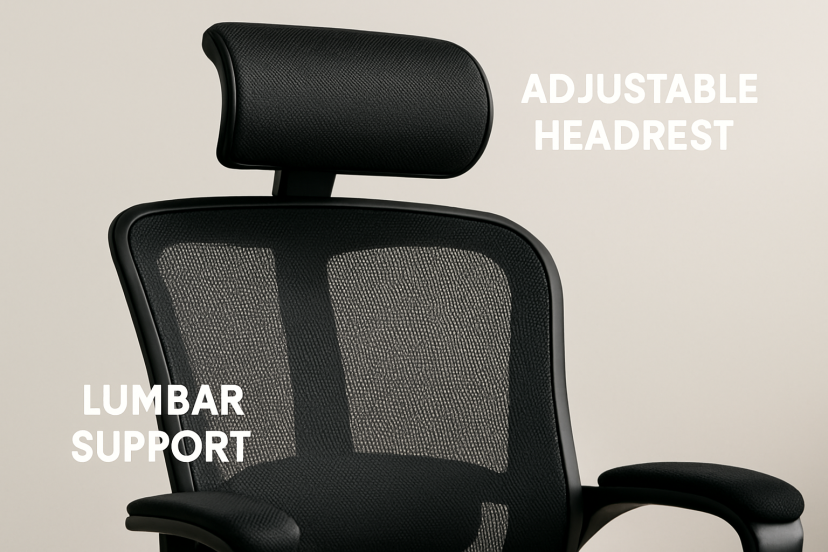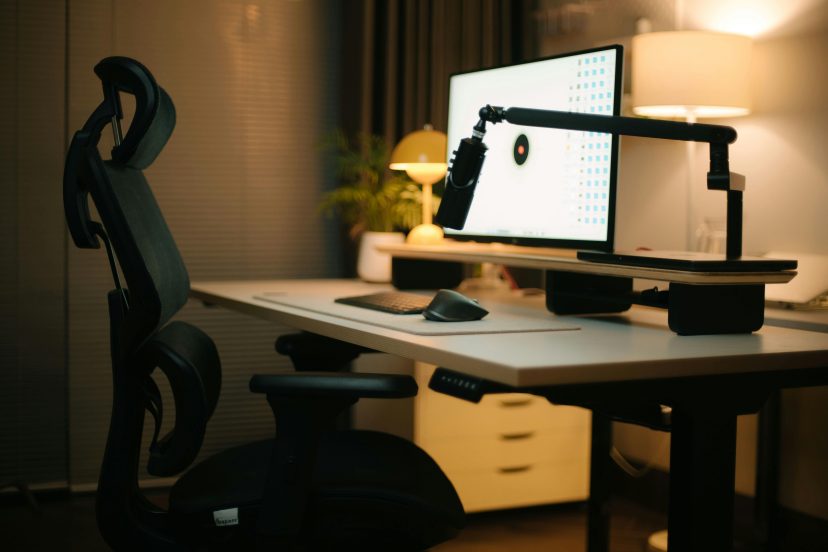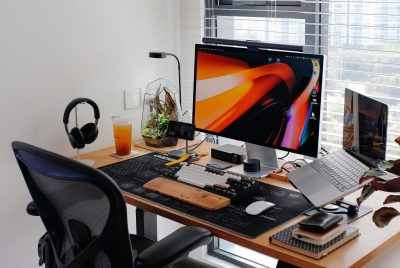How a Chair With High Backrest Improves Ergonomics at Work
We may earn a commission for purchases made using our links. Please see our disclosure to learn more.
A chair with high backrest can completely change how your body feels during long workdays. Instead of fighting to stay upright or dealing with constant neck and shoulder tension, the right high-back chair supports your entire spine so you can sit comfortably and stay focused. If you’re looking for a simple upgrade that immediately improves posture, reduces strain, and boosts productivity, a well-designed high-back chair is one of the smartest investments you can make.
Why a High Backrest Matters More Than You Think
A high backrest isn’t just a visual upgrade—it’s a functional one. Chairs with short or mid-back support leave the upper spine unsupported. Over time, this forces the muscles in your neck, shoulders, and upper back to work harder to keep you upright.
A chair with high backrest supports:
- The lower back (lumbar curve)
- The mid-back (thoracic region)
- The upper back and shoulder blades
- The neck (when a headrest is included)
By distributing your weight more evenly, the chair prevents the gradual forward slump that many people experience during long work sessions.
The result? You experience less fatigue, better posture, and more comfort throughout the day.

Posture Benefits You Feel Immediately
One of the biggest advantages of a high-back chair is the way it promotes healthier posture almost effortlessly.
Supports thoracic extension – It prevents your upper back from collapsing forward.
Keeps your neck in a neutral position – Your head stays aligned instead of drifting forward.
Reinforces your natural lumbar curve – You avoid the flat-back posture that causes lower-back pain.
Reduces tension in your shoulders – Your shoulder girdle relaxes naturally against full upper-back support.
When these areas stay aligned, your entire body benefits.
How a High Back Chair Supports Everyday Work Activities
Different tasks place different demands on your body. A high-back chair supports all of them seamlessly.
Typing & Desk Work – Keeps your spine supported while your arms and wrists remain neutral.
Reading Or Document Review – Provides upper-back stability, reducing fatigue.
Video Meetings – Maintains posture even when your attention is fixed on the screen.
Creative Work & Problem-Solving – Lets you lean back, think, and stay comfortable without collapsing into poor posture.
Micro Breaks – Tilt and recline options allow small posture changes, improving circulation and comfort.
Key Features to Look For in a High Backrest Chair
| Feature | Why It Matters |
| Adjustable lumbar support | Keeps your spine in proper alignment and reduces lower-back strain. |
| Adjustable headrest | Supports the neck and encourages healthy cervical posture. |
| Multi-tilt or synchro-tilt mechanism | Allows natural movement throughout the day and reduces stiffness. |
| Seat depth adjustment | Keeps your thighs supported and stops the back of your knees from feeling compressed. |
| Breathable mesh or supportive upholstery | Prevents heat buildup and keeps you comfortable during long sessions. |
| Multi-directional armrests | Minimizes shoulder tension and helps maintain neutral wrist positioning. |
These features can significantly improve comfort and long-term health.

Top 5 High-Back Ergonomic Chairs
Here are five excellent options with strong comfort, adjustability, and durability scores.
1. SIHOO M18 High-Back Ergonomic Chair
A balanced option offering lumbar support, solid adjustability, and breathable mesh.
2. Duramont Adjustable Office Chair
Highly customizable, with a strong headrest and lumbar flexibility.
3. Gabrylly High Back Mesh Chair
Ideal for warmer climates or anyone who prefers full-mesh airflow.
4. NOUHAUS Ergo3D Ergonomic Chair
Offers smooth movement, 4D armrests, and dynamic lumbar support.
5. Hbada High Back Desk Chair
A clean, modern design that fits well in home offices and smaller workspaces.
Comparison Table
| Product | Best For | Key Features | Material | Price Range |
| SIHOO M18 | All-day work | Adjustable lumbar, tilt, breathable mesh | Mesh + foam | $$ |
| Duramont Ergonomic Chair | Custom adjustability | Adjustable lumbar firmness, headrest height, recline | Mesh | $$–$$$ |
| Gabrylly High Back Mesh | Warm climates/small offices | Foldable armrests, full mesh, large headrest | Mesh | $$ |
| NOUHAUS Ergo3D | Users who shift posture often | 4D armrests, dynamic lumbar, smooth recline | Mesh + polymer | $$–$$$ |
| Hbada High Back Chair | Minimalist offices | Sleek build, mesh back, headrest | Mesh | $–$$ |

How a High-Back Chair Complements Your Entire Ergonomic Setup
A supportive chair is the foundation of a healthy workstation, and research reinforces just how important that foundation is. A 2012 systematic review on workplace seating found that workers who switched to ergonomic chairs with stronger back support experienced less musculoskeletal discomfort, especially in the lower and upper back. This means a high-back chair isn’t just “comfortable”—it actively helps reduce strain across the entire spine when paired with good workstation habits.
A 2023 laboratory study further showed that features commonly found in high-back ergonomic chairs—like lumbar support, proper backrest angle, and seat-pan tilt—help users maintain healthier spinal alignment and lower muscle activation during long sitting sessions. In other words, the right chair supports your body so you don’t overwork your muscles just to sit upright.
When you combine a high-back chair with the rest of an ergonomic setup—like:
- A properly raised monitor
- A neutral wrist position
- A supportive keyboard
- A footrest if needed
- Proper seat height
…you create a system that keeps your posture aligned and reduces unnecessary wear on your body.
Ergonomics works best when all elements support one another. Your chair is simply the first and most important piece—and when backed by research, it becomes clear why a high-back ergonomic chair is the smartest place to start.
Final Thoughts
If you’re ready to improve comfort, posture, and productivity at work, investing in a chair with high backrest is one of the smartest decisions you can make. It supports your entire spine, prevents slouching, reduces fatigue, and helps you stay focused longer. Combine your chair with a well-designed desk setup, and you’ll feel the difference immediately—both physically and mentally.
FAQs
1. Are high-back chairs better for long sitting sessions?
Yes. They provide full-spine support and reduce upper-back and neck fatigue.
2. Does a high backrest prevent slouching?
It doesn’t force posture, but it supports your back so slouching becomes less likely.
3. Is mesh better than cushioned upholstery?
Mesh is more breathable, while upholstered backs may feel more plush. Both can be ergonomic.
4. Do all high-back chairs include lumbar support?
No. Always check whether lumbar support is built-in or adjustable.
5. Is a headrest required for proper support?
It’s beneficial but not mandatory. If you have neck discomfort, choose a chair with one.




